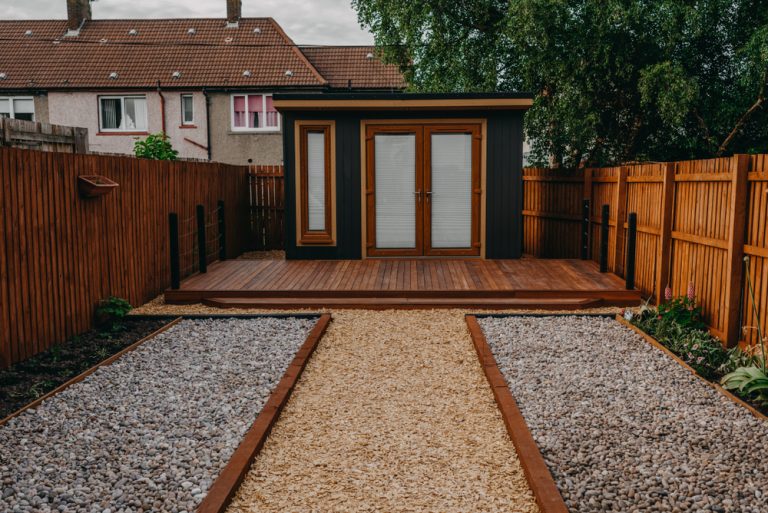In the midst of the Great Resignation, many ex-employees-turned-self-employed-workers are desperate for a dedicated working space at home. You don’t need to kick one of the kids out of their room or resign yourself to working at the kitchen table — as long as you have a shed in your backyard.
Sheds, or portable buildings, are ready-made structures that are most often used to shelter outdoor equipment or as storage for belongings you don’t need in the home. But, with a few relatively easy updates, you can make a shed into a lovely, cozy and practical office. Here’s how.
Hang Doors and Windows
Sheds aren’t usually made for human occupation, so most don’t come with practical doors, let alone windows. To make your office space more agreeable, you can cut a small window or two into the side, which will give you some natural light. You might also consider replacing the door with one that can lock from the inside, so you can keep all your office gear safe.
Electrify
The main thing that separates a comfortable, modern office from a cave is electricity. You need electricity to turn on your lights, charge your devices and run your heating and cooling. Wiring isn’t particularly difficult — but if you get it wrong, it could be disastrous. Unless you know someone who can supervise the installation of a new circuit breaker and wiring to all the switches, outlets and fixtures in your office, you should hire a professional for this job.
Heat and Cool
Unless you live in some paradise where it remains temperate year-round, you need to think about heating and cooling for your office shed. Because sheds tend to be small spaces — and because you were so diligent about insulating — you might not need a robust furnace or air conditioner to keep your office comfortable. Instead, you can find an electric portable radiator that you can tuck away during the warm seasons, and you use a tiny wall- or window-mounted AC for the summer months. Regardless, you should hang hugger ceiling fans to improve airflow during all seasons.

Insulation is a critical element of the building envelope, which protects the inside from the outside. Insulating well will allow you to easily maintain a consistent temperature inside your office shed, and it will help muffle sounds from the yard or road. There are different ways of insulating structures, but the easiest to DIY is blanket insulation, which is the puffy pink stuff you staple to the studs — just make sure you wear long sleeves and pants to protect your skin.
Drywall
You don’t have to add drywall, but doing so will make your office feel more civilized, more professional and more exciting to work in. If you are an experienced home DIY-er, you might be able to tackle a drywall job; it is an easy material to cut, and once you get the hang of positioning the panels correctly on the studs, a drywalling project goes fast. However, you might need some help holding the larger drywall pieces, especially when it comes to the ceiling. Once the drywall is hung, you should putty over the cracks.
Floor
Because you cannot insulate the floor with the same materials you use on the walls, adding flooring is a good way to make the floors more comfortable. Because you will be trudging through the yard to reach your office shed, you probably don’t want to install flooring that requires a lot of care — so no hardwood, marble or white carpet. Laminate flooring, especially vinyl laminate, and tile are your best options, and you can cover your floor with a rug if you want extra coziness .
Decorate
Now that all the essential elements of your office shed are in place, you can feel free to decorate. You can paint the drywall as soon as the putty is dry, and once painting is complete, you can move in your desk, chair, electronics and any other supplies you need to get work done. Since you won’t have much floor space in your office shed, you should consider adding wall shelves for storage.
You can buy a portable building for a few thousand dollars and transform it into a beautiful, private office space for a few hundred more. Once you are done, you will have an invaluable space for doing whatever work you choose.

